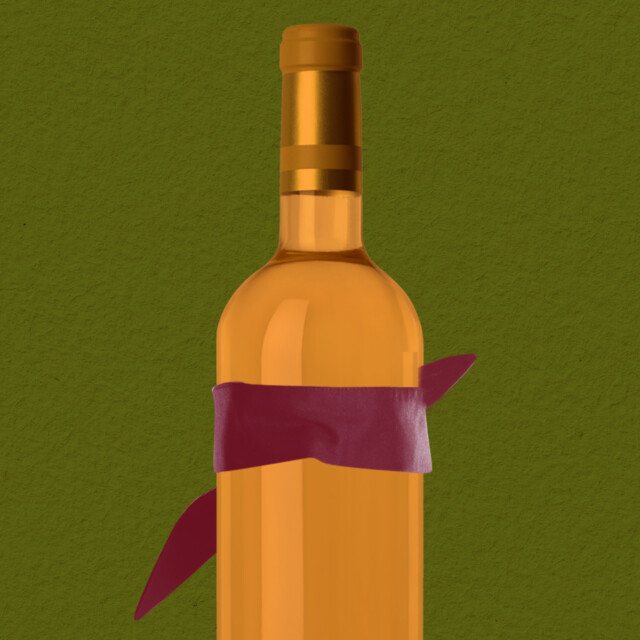During my nearly decade-long spell — first as a tasting room staffer, and ultimately as assistant winemaker — at an Oregon winery, I logged a lot of tasting room hours. I fielded a lot of questions, most having little or nothing to do with the wine in question: I offered directions to the restroom, repeated the tale of how I got mixed up in the wine industry, or slid a handwritten note with the wi-fi password across the bar for somebody on their phone.
There’s nothing unusual about the above except that it’s an ideal metaphor for what wine and just about everything else has become — busy. In many cases, it’s unavoidable. I, too, like to sip a splash of Pinot Gris while scrolling through the day’s soccer scores. Sometimes, I’ll answer the call of the QR code on the label and be whisked away to an estate in Chile or Italy for an impromptu digital vineyard tour. I love to pluck things like “rugged minerality” and “eucalyptus” from the literature and see if I can pick any of that up.
Amid all that noise, the blind tasting continues to stand out as one of the last mindful experiences in wine. Perhaps because it’s so quiet and personal, or because when we take part in one, we run the risk of running into unknowns and therefore up our probability of being wrong. It’s embarrassing to be incorrect, especially in wine where there’s always been such a divide between those in the know and everybody else. It’s unforgiving terrain (I can’t tell you how many times people would preface an inquiry in the tasting room with, “I know this is stupid, but…”).
The blind tasting is the wine industry’s answer to stargazing on a clear night, jaw agape. It’s where you go to get a little perspective. If you feel insignificant, that’s kind of the point. It’s a time to mute the many knowing voices (read: reviews) and simply gauge your own response to the wine, whatever that may be.
Steve Lutz is the proprietor at Lenné Estate in the Willamette Valley. He’s one of just a few intrepid wine industry folks who are still hosting these kinds of unscripted tastings. “It’s an important [way to taste] as it takes away any preconceived notions, and puts wine on an equal playing field,” he says.
Lutz considers himself fortunate to have been a fixture at the blind tasting table at Robert Mondavi, where he used to work. “They used to conduct a blind tasting every week for any staff who’s signed up,” he recalls. “I loved it because it trained my palate and they would expose us to world-class wines.”
Anybody who’s peeped the price tag before sipping or overheard the person down the bar rattling off the many different species of stone fruit they’re tasting in the glass knows the psychology at play. All of that context seeps into your perception. The blind tasting eliminates all that, sometimes to a perceived fault (am I supposed to like this one?). Ultimately, it allows you to have a genuine getting-to-know-you moment with what is arguably the most subjective form of food on the planet.
Today, Lutz hosts about a half-dozen of his own blind tastings a year, inviting people out to his tasting room to wade through eight wines, brown-bagged for secrecy. The wines are selected around themes, like high-end Pinot Noir (eight selections retailing for at least $100) or Oregon Chardonnay. At least one Lenné wine is always in the mix and tasters are encouraged to not only take notes, but rank their subjects.
Despite their value, it’s easy to see why these kinds of tastings have pretty much been confined to after-hours winemaker hangouts and sommelier circles. There’s a chance your $120 Cabernet might lose out to the one in the box. “I don’t think most producers want to risk their wines showing poorly, which is why they aren’t done more,” Lutz says.
Having been to those industry events — the ones where dozens of vintners from the same growing area can’t agree on what they’re tasting even though it’s the same wine — I feel confident in saying that on the surface, it’s chatty bickering about blue fruit versus red fruit. In reality, it’s a humble and collective admission that this stuff is mysterious. It’s that bit of lovely chaos that makes up the backbone of the blind tasting, and what makes it so integral.
Attending a blind tasting put on by a seasoned pro like Lutz is probably the way to go but you can conduct your own at home. Pick a theme — an appellation, a varietal, a winemaker — and a handful of corresponding wines. Conceal their identities, mix ‘em up, pour, and compare. There are wrong answers, sure (the varietal in question, the kind of fermentation, etc.), but you’ll learn from those and move on. But there are no wrong interpretations.
The blind tasting is a thing of beauty because it reminds you of everything you don’t know about wine. And if you’re willing to start there, you’ll learn to trust your palate and gain a relationship with Albariño, the Russian River, or GSM that’s raw, exciting, and educational. It’ll involve actual elements of discovery — not just the very specific, very curated tour guide.
